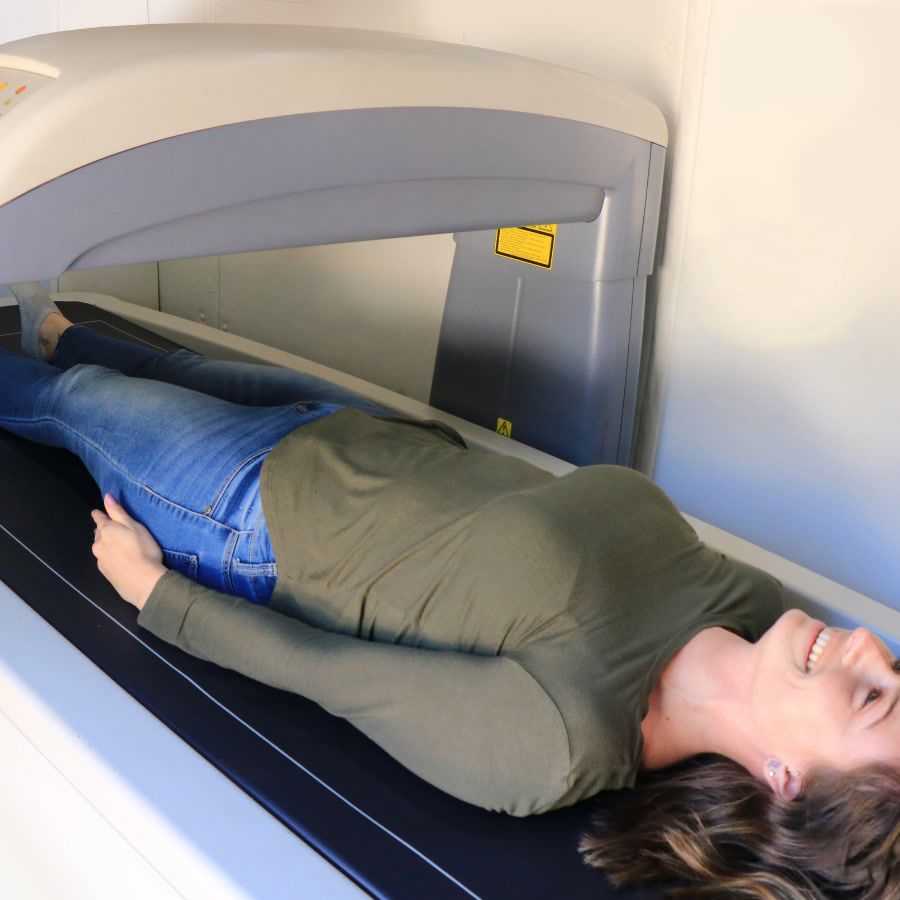What Are Macros? A Complete Guide to Macronutrients
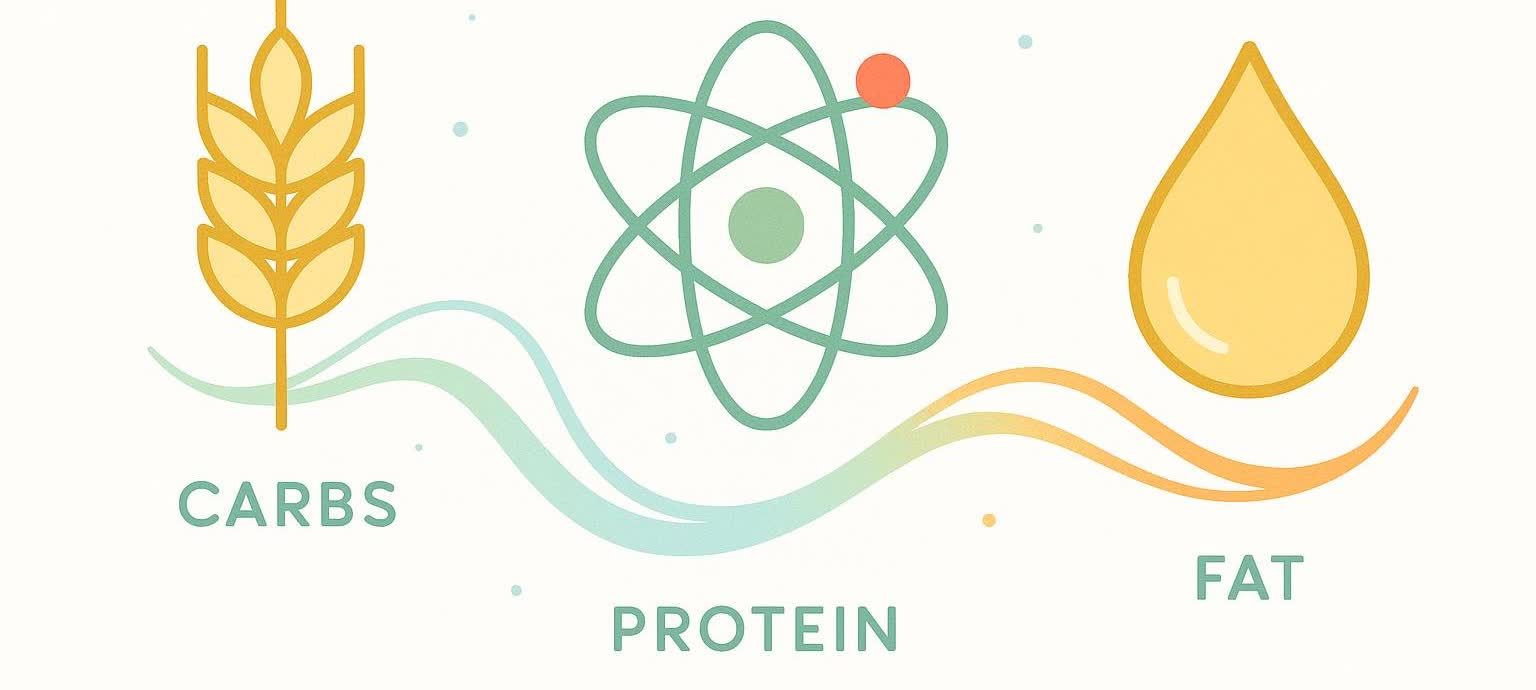
What Are Macros? Your Complete Guide to Macronutrients
"Macros" is shorthand for macronutrients—the three nutrients your body needs in larger amounts: carbohydrates, protein, and fat. Together, they power your day, build and repair tissues, support hormones, and help you feel satisfied after meals.
TL;DR: What are macros and how do I use them?
- Macros are your carbs, protein, and fat.
- There’s no one “best” split—stay within AMDR ranges and tweak based on goals and preferences (National Academies AMDR overview).
- Quick setup: 1) estimate calories, 2) choose a ratio (e.g., 40/30/30), 3) convert calorie percentages to grams based on each macro’s calorie value, 4) track for 2–4 weeks and adjust (Atwater energy factors).
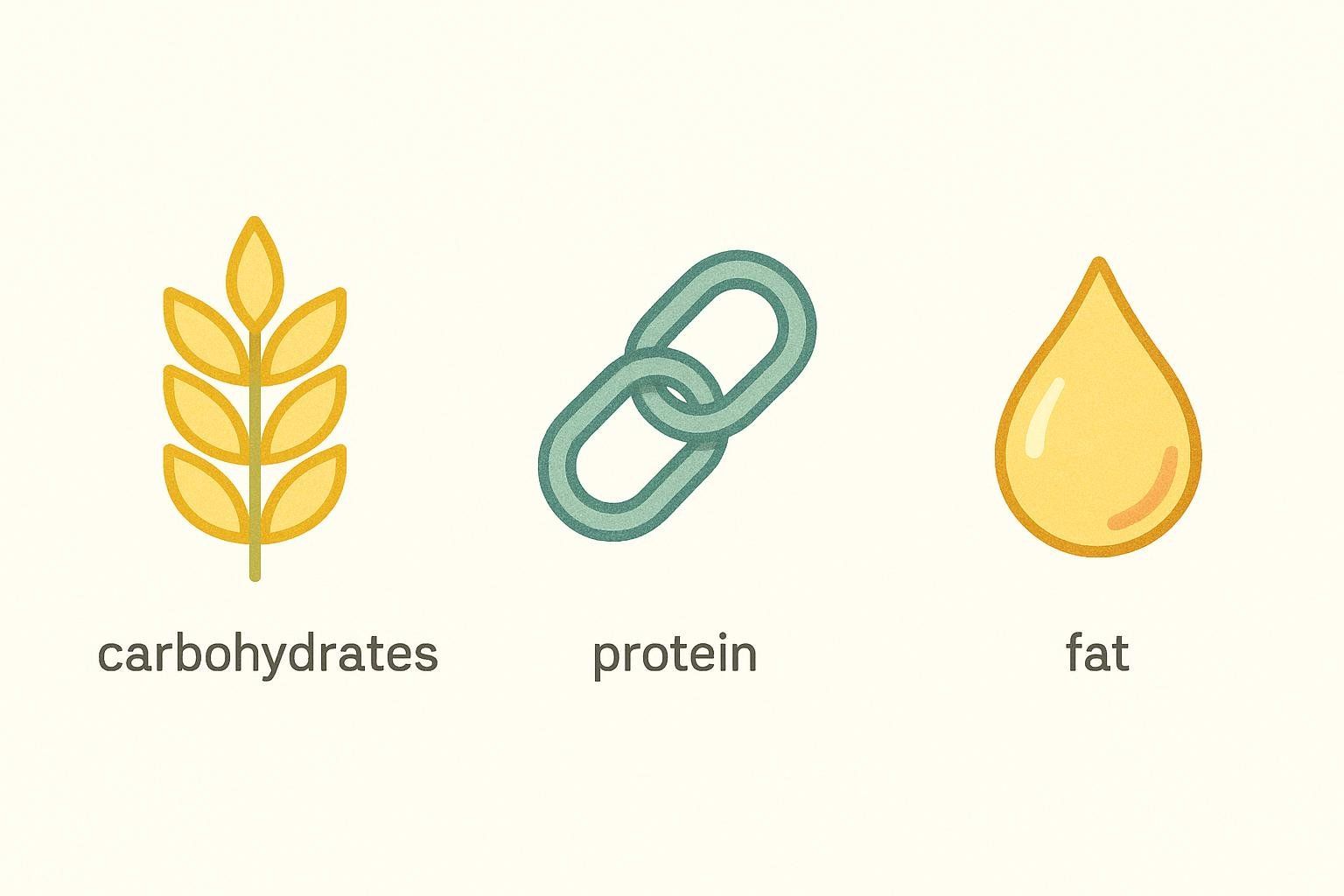
Macros 101 (and why they matter)
-
Carbohydrates
- Primary role: the body’s preferred fuel for your brain and working muscles.
- Common sources: grains, fruits, beans, starchy veggies.
- Learn more: carbohydrates as preferred fuel (MD Anderson explainer).
-
Protein
- Primary role: builds and repairs tissues; critical for enzymes, hormones, and immune function.
- Common sources: eggs, dairy, poultry, fish/seafood, lean meats, tofu/tempeh, beans, lentils.
- Learn more: protein’s roles across tissues (MD Anderson overview).
-
Fat
- Primary role: supports cell membranes and hormones, promotes fullness, and helps you absorb vitamins A, D, E, K.
- Common sources: olive oil, nuts, seeds, avocado, fatty fish. Favor unsaturated fats and limit saturated fat for heart health (AHA saturated fat guidance).
How much of each macro? Start with AMDR ranges
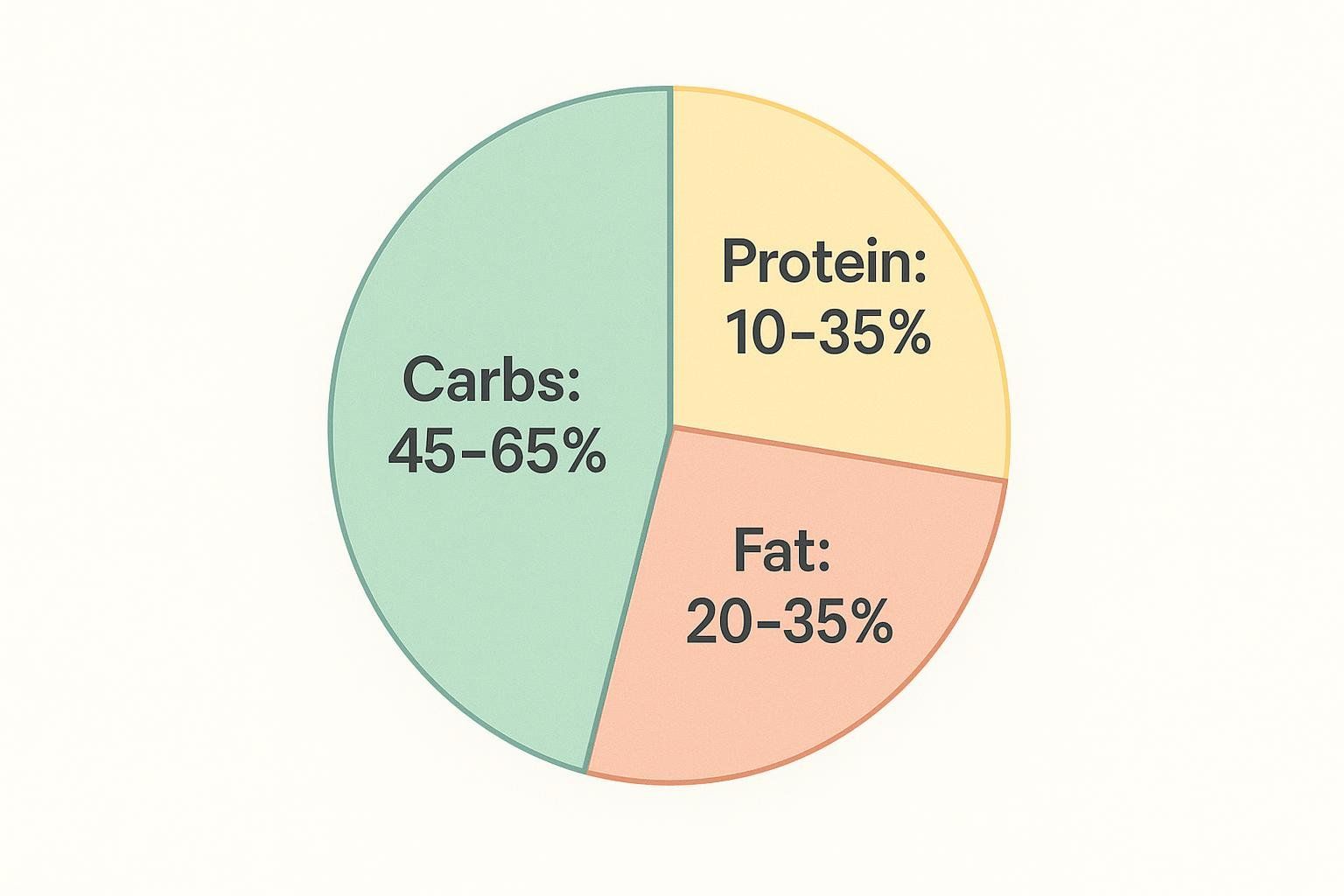
The Acceptable Macronutrient Distribution Ranges (AMDR) for adults are:
- Carbohydrates: 45–65% of total calories
- Protein: 10–35% of total calories
- Fat: 20–35% of total calories
These ranges are designed to support nutrient adequacy and help reduce chronic disease risk when combined with healthy eating patterns (National Academies AMDR background). There’s no single ideal ratio for everyone—your needs depend on health, activity, and goals (as explained by MD Anderson).
Protein: daily targets and food sources
- General minimum: 0.8 g/kg/day (RDA) and 10–35% of calories from protein (AHA protein basics).
- Active people: 1.4–2.0 g/kg/day often supports training, body composition, and recovery, per the ISSN position stand on protein.
High-protein options: eggs, dairy, poultry, fish/seafood, lean meats, tofu/tempeh, soy yogurt, seitan, beans, lentils. Plant-forward eaters can mix sources to cover all essential amino acids. More ideas: High Protein Vegan Meals.
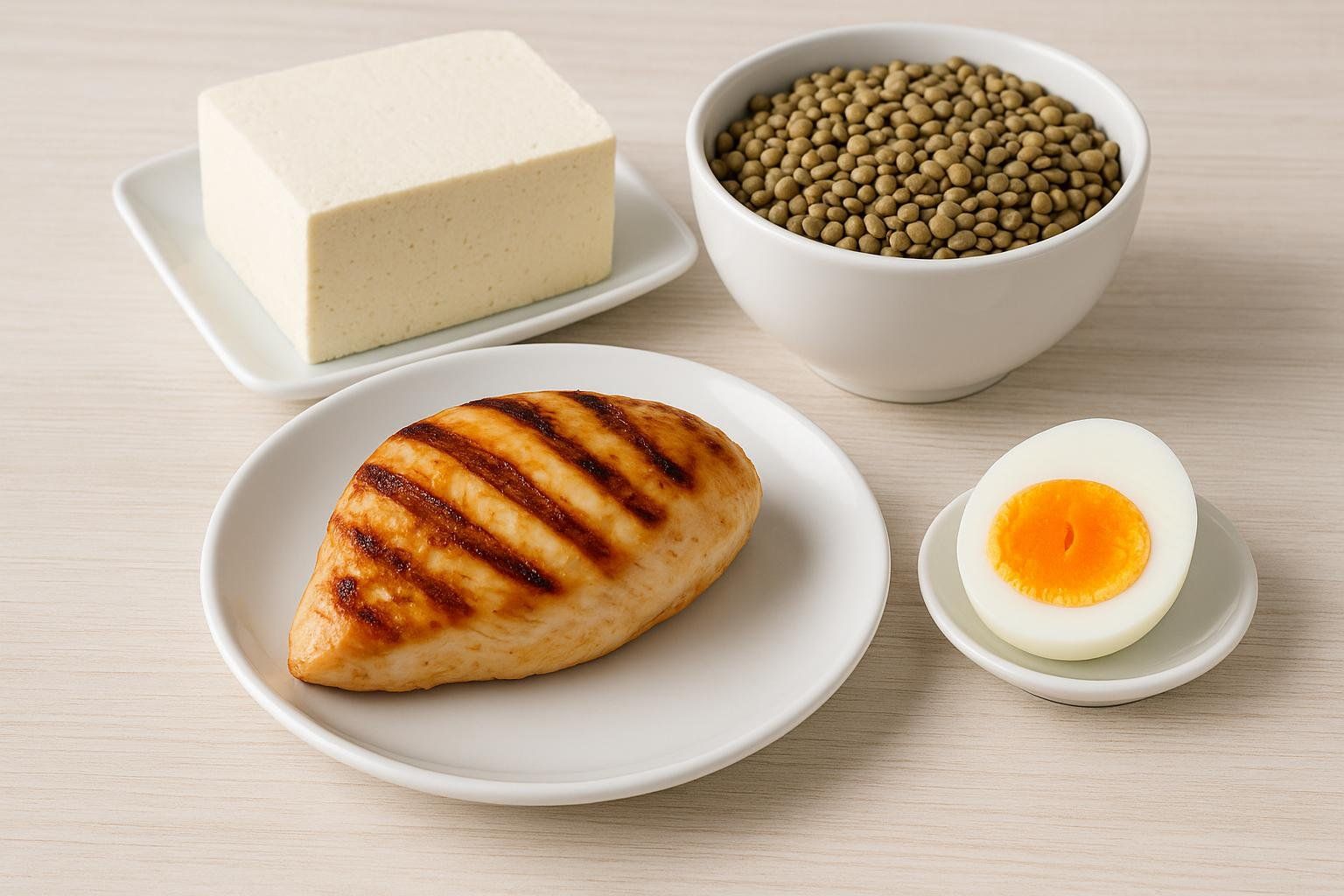
Pro tip: If you know your lean mass from a DEXA scan, you can fine-tune protein more precisely. Learn how DEXA improves nutrition planning.
Carbohydrates: quality, fiber, and blood sugar
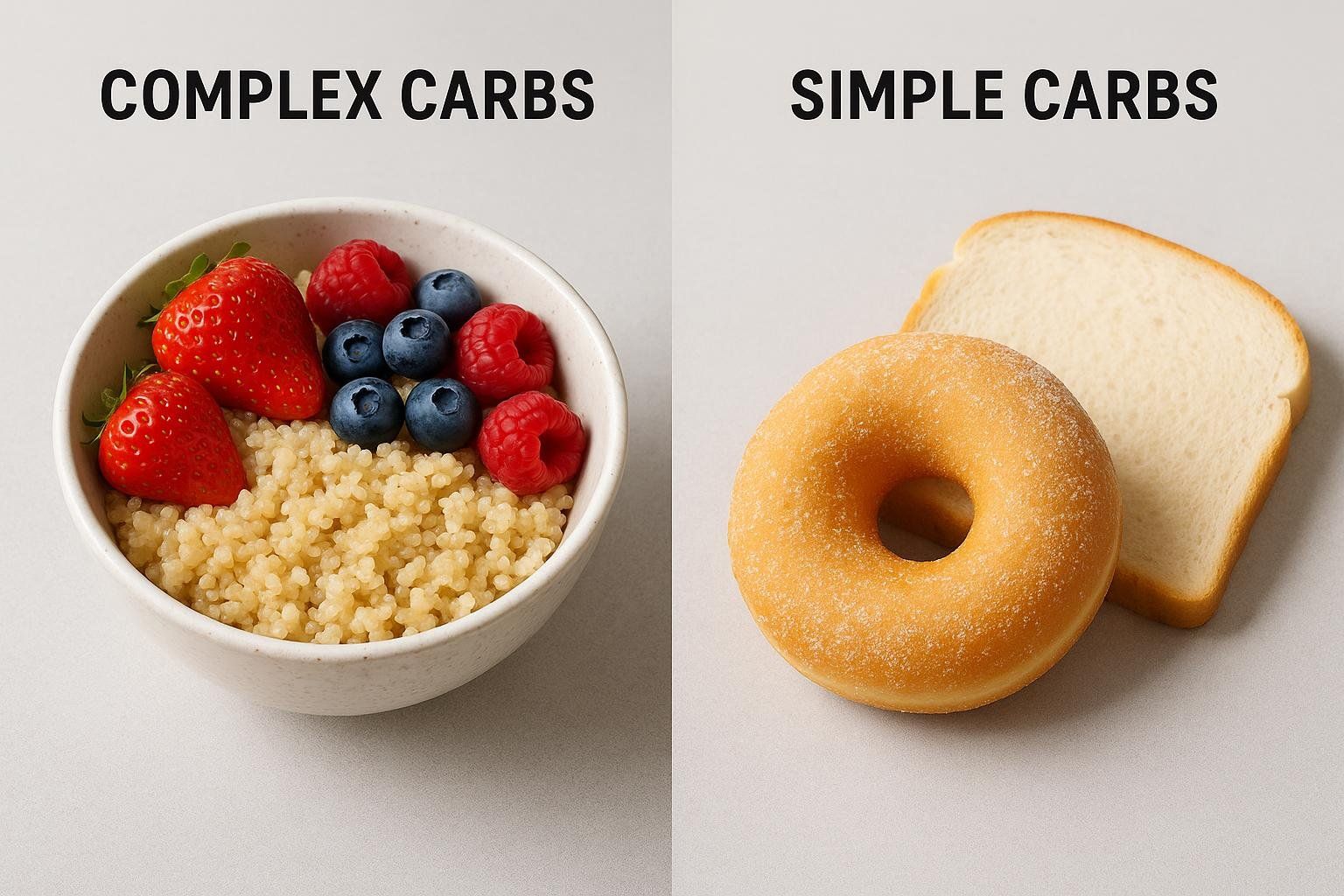
Favor fiber-rich, minimally processed carbs—vegetables, fruits, legumes, whole grains—for steadier energy and better fullness. If you have diabetes or prediabetes, structured carb planning (carb counting and consistent carbs at meals) can help match intake with medication and keep glucose in range.
Fats: the right kinds in the right amounts

Aim for mostly unsaturated fats (olive oil, nuts, seeds, avocado, fatty fish). Limit saturated fats to support heart health—AHA recommends keeping saturated fat to less than 6% of daily calories (AHA saturated fat recommendations). Keep total fat within the AMDR (20–35% of calories) and adjust based on your energy needs and satiety.
How to set macros for your goals
Beginner fitness enthusiast: build muscle, learn the ropes
- Start calories near maintenance; set protein first at 1.4–2.0 g/kg/day (ISSN guidance). Then assign the remaining calories to carbs and fats within the AMDR.
- Common starting ratios like 40/30/30 or 45/25/30 (carb/protein/fat) are examples of how this can look once protein is set.
- Keep it simple:
- Meal-prep 1–2 proteins.
- Choose 2–3 carb staples and 1–2 fat sources for the week.
- Log intake for 2–4 weeks to learn your portions.
- Bonus: Confirm lean-mass progress with a DEXA scan every 8–12 weeks; here’s why composition beats scale weight: Body composition vs. weight.
Busy professional focused on weight loss: keep it simple
- Start with a 10–20% calorie deficit and prioritize high-protein meals (≈25–35 g/meal).
- Common starting ratios: 30/35/35 or 35/35/30 (carb/protein/fat).
- Consider these grab-and-go staples:
- Greek yogurt
- Cottage cheese
- Rotisserie chicken
- Tuna/salmon packets
- Microwaveable grains
- Pre-washed salads
- If appetite is low (busy schedule, stress), focus on nutrient-dense foods and hitting a minimum protein target to help prevent muscle loss.
- Watch for signs of muscle loss: Am I losing muscle?.
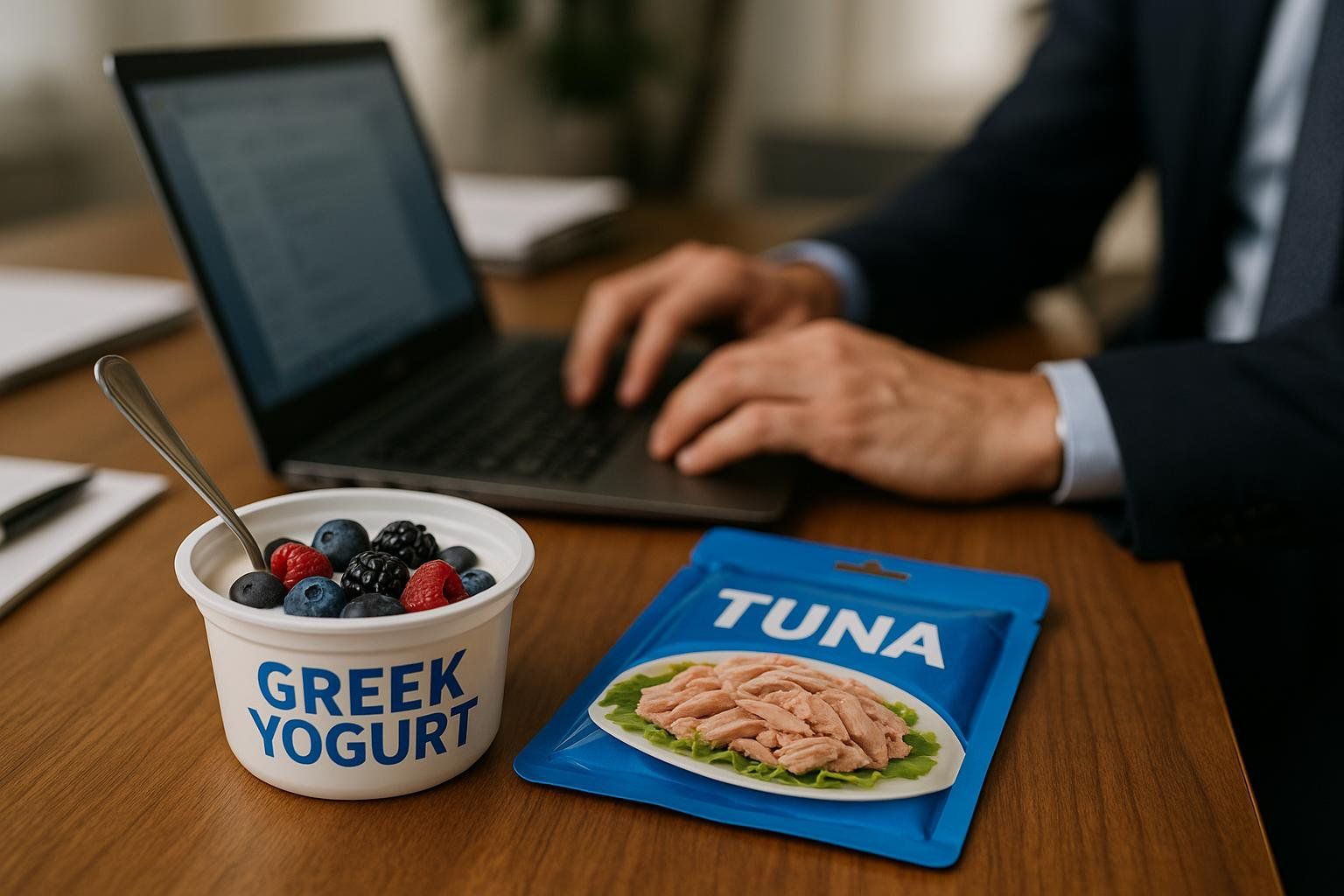
Type 2 Diabetes: manage blood sugar with macros
- Keep total carbs consistent across meals and align with meds or insulin. Common approaches include carb counting or using "carb choices" of about 15 g each. For details, see the ADA’s carb counting guidance and the CDC’s basics on carb counting.
- Emphasize nonstarchy veggies, minimize added sugars and refined grains, and choose whole foods over highly processed items. There’s no single ideal macronutrient distribution for diabetes—work with your clinician or RD/CDCES to individualize targets (ADA consensus report on nutrition therapy).
Set your macros step-by-step (with an example)
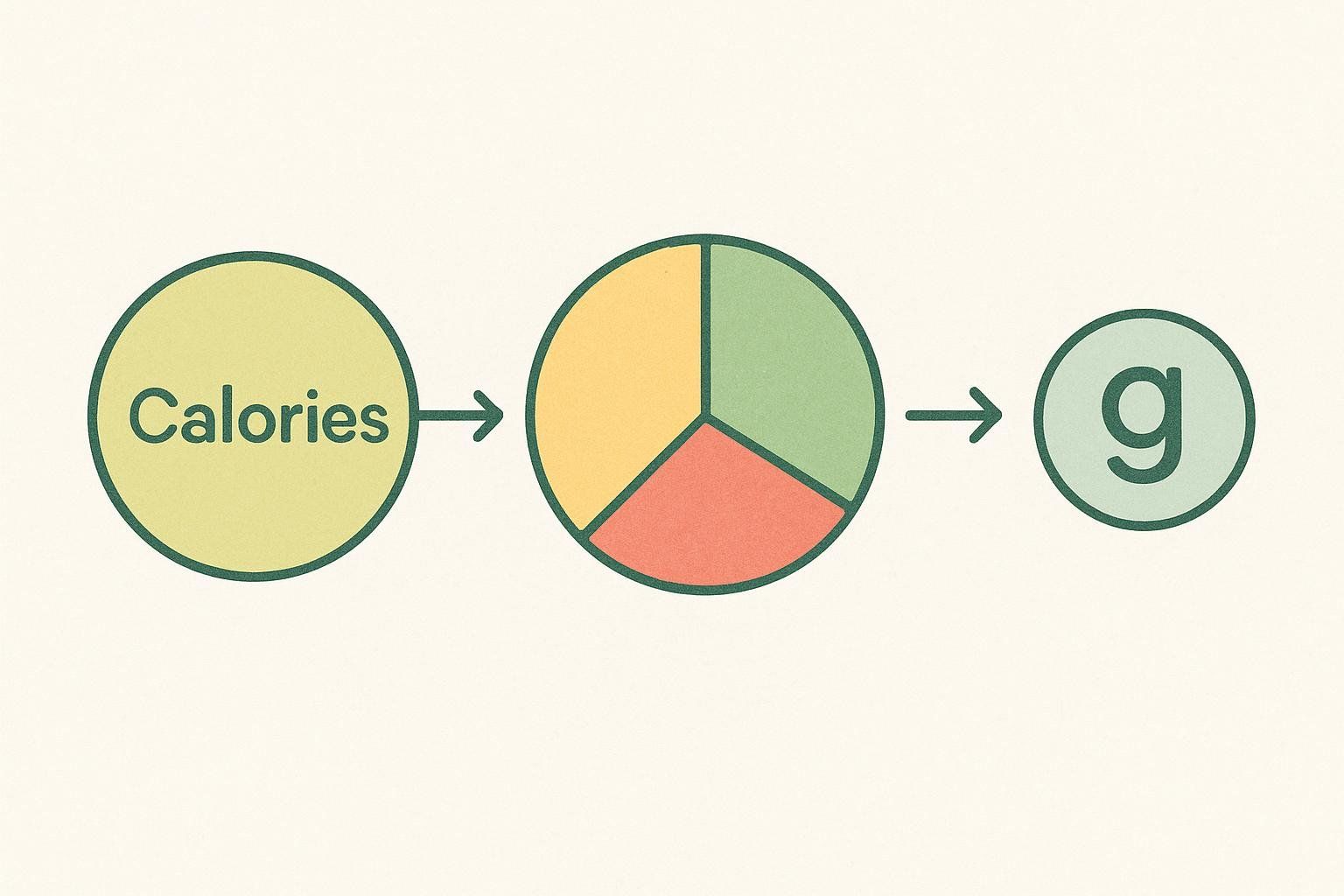
- Estimate your daily calories
- Use an RMR/BMR estimate plus activity, or measure RMR directly. Start here: All About the RMR Test or use our Resting Calorie Burn Calculator.
- Pick a macro ratio within the AMDR
- Common starting points:
- Balanced: 40% carb / 30% protein / 30% fat
- Higher-protein (fat loss): 30% carb / 35% protein / 35% fat
- Endurance-focused: 50–55% carb / 20–25% protein / 25–30% fat
- Always tailor to your health status and preferences.
- Convert to grams
Carbohydrates and protein have 4 calories per gram, and fat has 9 calories per gram. Convert your macro percentages to grams using these values.
- Example: 2,000 kcal/day at 40/30/30 →
- Carbs: 800 kcal ÷ 4 = 200 g
- Protein: 600 kcal ÷ 4 = 150 g
- Fat: 600 kcal ÷ 9 ≈ 67 g
- Energy factors source: Atwater principles.
For a fast, practical walkthrough on tracking, read our 5-Minute Beginner’s Guide. To better understand energy balance, see our primer on “Calories In, Calories Out”.
Tracking macros without the overwhelm
- Pick a single app and stick with it for 2–4 weeks.
- Log foods you eat often; save meals/recipes to speed things up.
- Pre-log your next meal to “reverse-engineer” your day and hit targets.
- Use BodySpec data to set smarter goals: knowing your lean mass helps pick a protein target and monitor fat vs. muscle change. Learn more: Interpreting your DEXA report.
Pro tip: Prefer visuals over numbers? Use a hand-portion method day-to-day and run periodic “audit weeks” of logging to recalibrate.
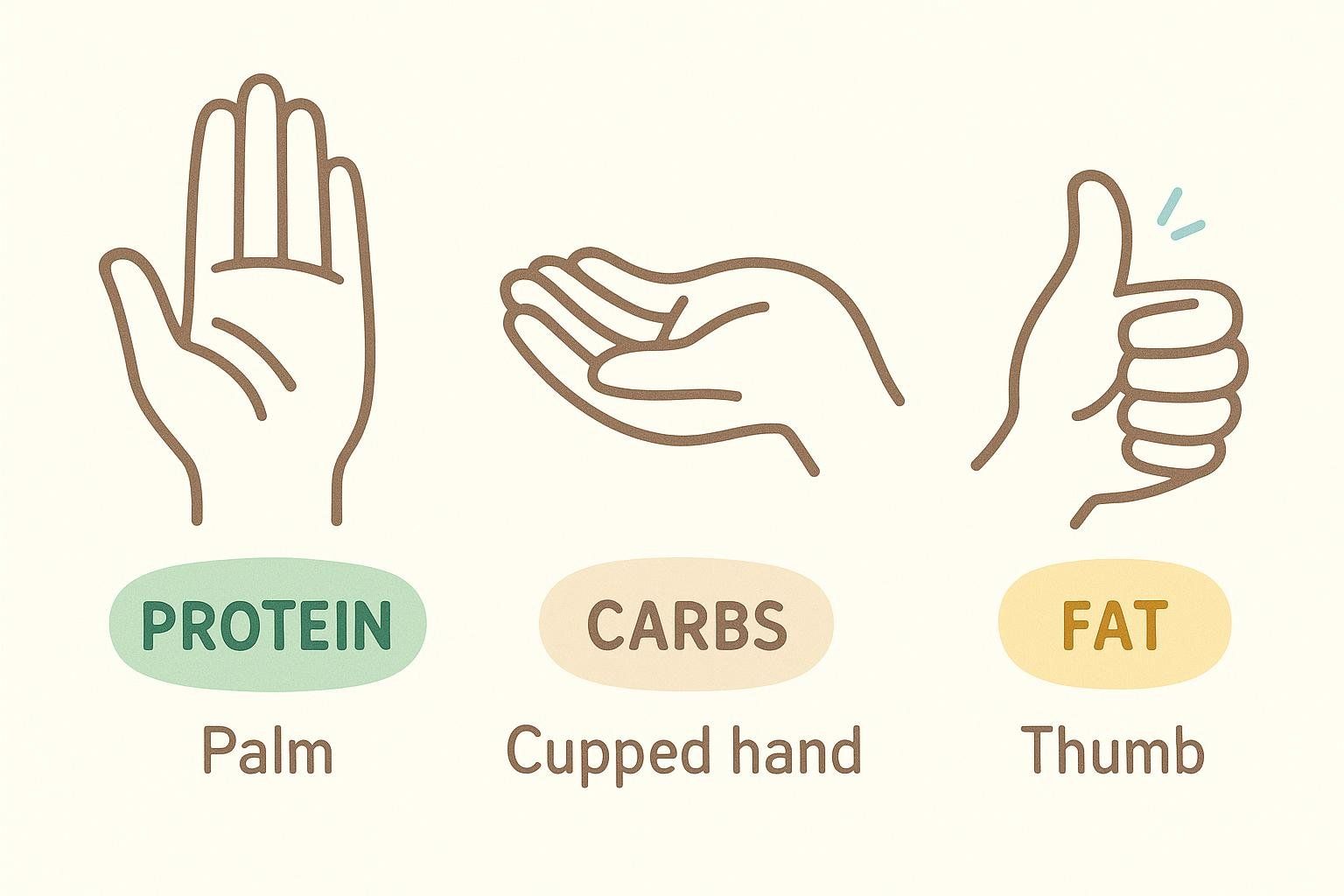
Common questions
What’s the “best” macro ratio for weight loss?
There isn’t one universal ratio. Successful weight loss relies on a sustainable calorie deficit plus adequate protein to preserve lean mass; many people prefer a slightly higher-protein split within AMDR ranges for appetite control (National Academies AMDR overview).
Do I have to count macros to get results?
No. Macro tracking is a tool. Many people do well with simpler rules (high-protein meals, plenty of vegetables, mostly minimally processed foods) and occasional check-ins. When progress stalls, tracking for 1–2 weeks can reveal easy wins. A DEXA scan helps you tell whether plateaus are from water shifts vs. limited fat loss: Body composition vs. weight.
Are macro calculators accurate?
They’re estimates. Your best calibration is your own data—body-composition changes, performance, hunger, and glucose trends. For tighter accuracy, pair calculator outputs with measured RMR and DEXA: All About the RMR Test and DEXA scan guide.
Is eating more protein safe?
Most healthy adults tolerate higher protein intakes well within the 10–35% AMDR range (see the AHA’s protein basics). For athletes, 1.4–2.0 g/kg/day is commonly recommended in the ISSN position stand on protein. If you have kidney disease or other conditions, talk with your clinician.
What about saturated fat and cholesterol?
Focus on mostly unsaturated fats and follow evidence-based limits for saturated fat to support heart health—less than 6% of calories per AHA (AHA saturated fat recommendations).
Turn macros into measurable progress
- A BodySpec DEXA scan gives you a baseline for fat, lean, bone, and visceral fat—with very low radiation exposure.
- Re-test every 8–12 weeks to confirm your macro plan is driving the change you want (e.g., fat down, lean mass stable or up).
- Need macro templates for muscle gain? Try our Lean Bulk Meal Plan.
By tracking your progress with BodySpec, you can use your own data to refine your nutrition plan with precision.


